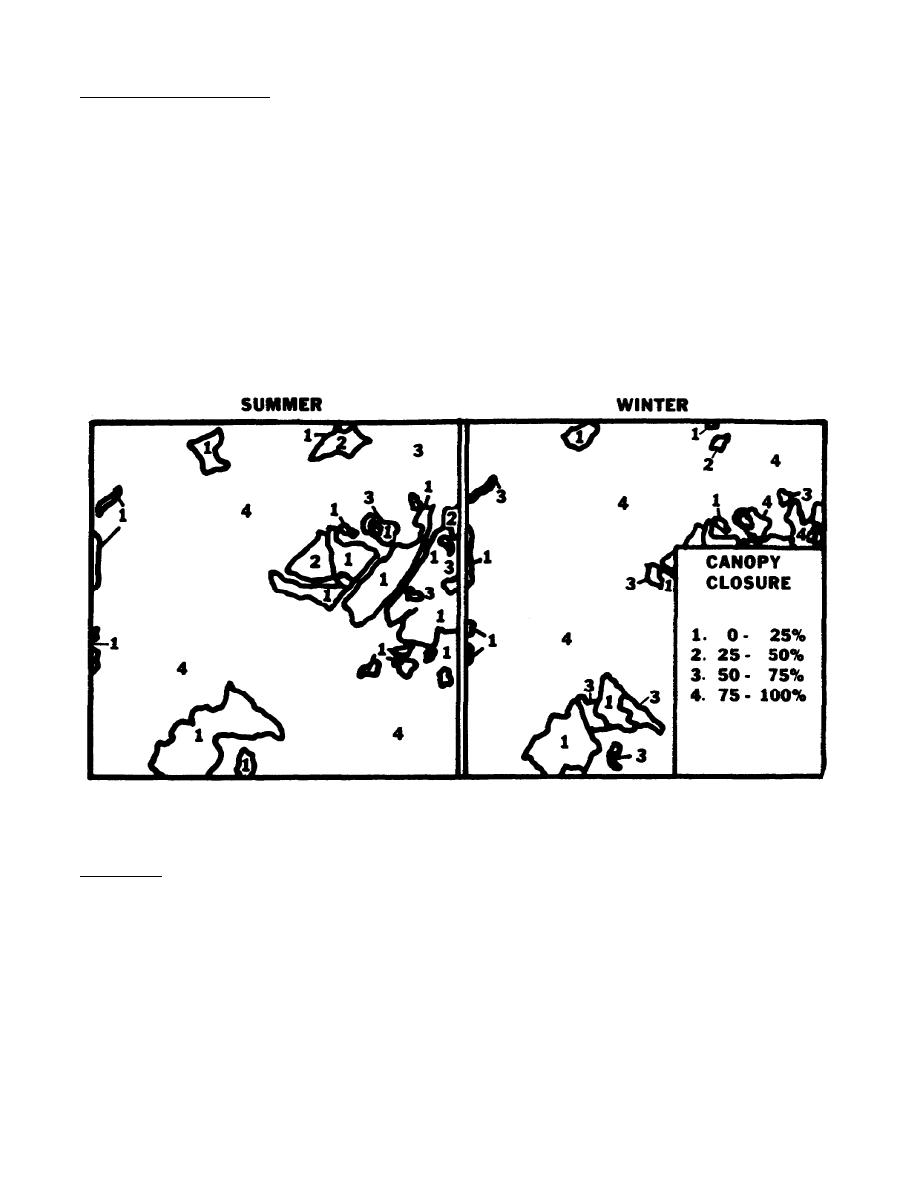
Concealment and Cover. Concealment of maneuver forces can be a tactical advantage.
Defenders can use concealment to draw the enemy deeply into prepared defensive
areas and attackers can use it to avoid being detected or engaged as they close.
Concealment is vital to operations security and deception.
Cover is the protection from the effects of fire. Concealment is protection from
air and ground observation. The cover from fire afforded by slopes, folds, and
depressions is critical because it preserves the strength of the force and can be
offered to both friendly and enemy forces. A direct-fire unit in a covered
position can dominate areas open to its front without suffering casualties.
Areas of concealment and cover can be determined through IPB. Observation and fire
from the ground and air are considered. Canopy closure of trees and vegetation
offers concealment from observation or from elevated points on the terrain. The
canopy closure overlay compares summer and winter growths.
Figure 2-8.
Canopy Closure Overlay.
Obstacles are natural and artificial terrain features that stop, impede, or divert
military movement. Their direct influence on mobility make them one of the most
important considerations in terrain analysis. Natural or man-made obstacles that
parallel the direction of movement can protect the flanks from attacks or
counterattacks.
IT 0462
2-10



 Previous Page
Previous Page
